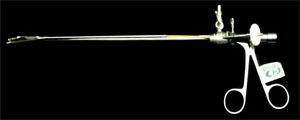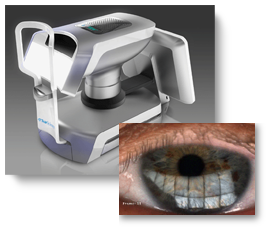by Robert Andrews, VP Business Development
The highly competitive medical device industry requires OEMs to take advantage of every possible resource, both internal and external, to stay ahead of the curve. Many device firms have capitalized on the benefits of out-sourced labor and manufacturing for years. But recently upstream functions, such as product design and development, have become a major part of the outsourcing product development trend. OEMs are realizing that they can capitalize on external engineering expertise to gain several advantages without jeopardizing trade secrets or intellectual property (IP), and more effective technology transfers and training are allowing manufacturers to better internalize partnership- produced knowledge for long-term benefits.
There are many factors that must be considered to determine whether outsourcing product design and development is a strategic fit for a company. Here are 10 key benefits that medical device manufacturers may be able to realize by contracting product design and development functions.
1. Leverage Multidisciplinary Expertise
Two heads are better than one, as the adage goes. This is particularly true for product design and development. Truly innovative products rely on multiple concepts and theories for differentiation and leadership in the market. A design team with industry spanning expertise can efficiently apply the best possible technology to the product concept. A team of engineers confined to one product line often does not have this pool of knowledge to draw from, which can make it difficult to find the best solutions to complex problems in a timely way.
2. Expand Internal Engineering Capabilities
Some projects require rapid staffing scale-ups for short term assignments, and not all OEMs are equipped to do so. Hiring full time employees is not always economical, and adding temporary help is time consuming and can present confidentiality risks. And in either case, finding the right people and getting them down the learning curve always takes longer than anticipated. Outsourcing allows OEMs to leverage their partner’s full-time staff to device development projects quickly and cost effectively. Then, the proper amount of the targeted expertise can be applied at the right time. Companies can therefore avoid paying for excess labor and engineering costs. Table I shows various staffing scale-up options.
However, it is important to note that it is difficult to make direct hourly rate comparisons of in-house design versus external engineering. Outsourced hourly rates include items that are hidden within the organization when design is conducted internally. Such internal costs include CAD work stations, software licensing fees, office and laboratory space, tools, and equipment.
Lastly, be sure that an outsourced development project is placed into the hands of an outsourced development resource that has a thorough knowledge of applicable standards. Documentation from an outsourced development effort should be able to withstand scrutiny of such standards as ISO 13485, and designs should meet safety and EMI standards like IEC 60601-1. Interview the potential outsourcer. Ask to see their quality manual and some SOP’s and sample documentation. Get them to talk about some details of safety and/or EMI problems that they encountered in previous programs.
| FACTORS |
PERMANENT HIRING |
TEMPORARY HIRING |
OUTSOURCING |
| Employment Costs |
High recruitment and employee benefits costs; enhances internal knowledge base |
High recruitment costs |
Ability to pay for fractions of people reduces costs; initially appears to be more expensive |
| Confidentiality |
Potential layoffs pose confidentiality risks |
Quality and confidentiality risks |
Confidentiality and IP protection agreements |
| Program Management and Administration |
Human resource and administrative burdens |
Administrative and management burdens |
Partner assumes program management and administration |
| Expertise |
Trade-off of skill sets; can build specific technical skills in dedicated areas |
Trade-off of skill sets; unknown personnel quality |
Diversity and depth of skill sets |
| Learning Curve |
High |
High |
Low. Team that has worked together minimizes learning curve |
Table I. Various scale-up options are available to medical device manufacturers for product design and development projects.
3. Capitalize on Technology Forecasting
Experienced outsourcing partners should have a good grasp on up-and-coming technologies that could play a role in developing products. They should also know how these advances will affect a medical device company.
4. Manage Project Timeline
Many design projects fall victim to missed, or unmanaged timelines. With internal engineering and management resources stretched thin, it is often hard for OEMs to fully commit resources to product development projects. Outsourcing partnerships can offer an advantage, because the engineering firm not only assumes project time management responsibilities, but it can also assign and manage resources. It is a good idea for both parties to agree on a program time.
SHOULD I OUTSOURCE DESIGN?
How can device manufacturers determine whether their product design and development processes will benefit from outsourced engineering? Answer true or false to the following statements. If any are true, outsourcing product design and development may be the solution:
- Internal resources are stretched thin.
- Medical device development projects often run over budget.
- Product launches are often delayed, costing the company lost sales and additional expenses.
- The company has not released a market dominating product in several years.
- The R&D department has several new ideas, but it cannot develop cost-effective manufacturing processes to produce these concepts.
- It is difficult to keep up with the competition in terms of new product development.
5. Control Project Costs
Similar to providing project timeline management, outsourcing partners can help device OEMs keep product development costs within budgeted goals. At contract signing, the project budget should be set and resources allocated, with written approval required for any changes. Reports should be developed and delivered on an agreed-upon periodic basis to keep all parties abreast of current expenditures versus budgeted amounts.
Compared with internal product development, during which it can be difficult to account for time and resources, outsourcing relationships set costs for each project stage. In this way, OEMs can clearly identify the areas in which resources are invested and prevent costs from spiraling out of control. Table II shows an example of a project cost sheet.
Outsourcing design can have a positive effect on the bottom line, even if budget control is not an issue. Device manufacturers can often reduce project costs by working with external partners, because outsourcing design firms rely on past experience to optimize designs.
PROJECT STATUS REPORT FOR FY 2013, PERIOD 5
Project Number: GD00.005123 Status: Active
Project Name: Medical Device X Period of Performance: 08/04/13-10/04/13
Customer: John Smith Inc Project Manager: Jane Jones
| ACCOUNT NAME |
PRIOR YEAR |
|
CURRENT PERIOD |
YEAR TO DATE |
CONTRACT TO DATE |
TOTAL CONTRACT BUDGET |
| Labor Operations ($) |
218,020.37 |
|
20,504.!4 |
90,422.18 |
308,442.55 |
332,800.00 |
| Total Labor Cost ($) |
218,020.37 |
|
20,504.14 |
90,422.18 |
308,442.55 |
332,800.00 |
| Consultants, Independent ($) |
0.00 |
|
0.00 |
8,000.00 |
8,000.00 |
5,000.00 |
| Travel/Meals ($) |
382.66 |
|
180.44 |
300.12 |
682.78 |
500.00 |
| Courier and Freight ($) |
140.88 |
|
0.00 |
40.67 |
181.55 |
100.00 |
| Materials ($) |
4,530.85 |
|
892.54 |
2,542.77 |
7,073.62 |
58,500.00 |
| Total Non-labor Cost ($) |
5,054.39 |
|
1,072.98 |
10,883.56 |
15,937.95 |
58,500.00 |
| Overhead ($) |
24,502.41 |
|
2,209.61 |
15,404.88 |
39,907.29 |
41,225.50 |
| Material Handling ($) |
418.14 |
|
100.33 |
1,786.25 |
2,204.39 |
20,000.00 |
| General and Administration Expenses ($) |
18,309.67 |
|
1,088.88 |
10,454.05 |
28,763.72 |
33,750.00 |
| Total Indirect Cost ($) |
43,230.22 |
|
3,398.82 |
27,645.18 |
70,875.40 |
94,975.50 |
| Total Expense ($) |
266,304.98 |
|
24,975.94 |
128,950.92 |
395,255.90 |
486,275.50 |
| Labor (hours) |
1090.00 |
|
102.00 |
452.00 |
1542.00 |
– |
Table II. A product development cost sheet clearly categorizes incurred expenses and explicitly states contract budgets.
6. Reduce Time to Market
External design firms can speed time to market. Engineering partners can provide end-to-end solutions, providing guidance from concept and product development through equipment design, build, and installation. Having one point of contact for all aspects of a project lends efficiency to it. Additionally, design firms can apply knowledge of similar projects and technologies thereby enhancing productivity. They can also overcome technical obstacles that can delay product introductions. External designers do not have the steep learning curves or resource limitations that internal designers often face.
7. Maintain Confidentiality
One of the major misconceptions about outsourcing product design and development is that it compromises corporate trade secrets. However, confidentiality can be protected through nondisclosure agreements. Companies should also insist on competitive exclusivity.
The anonymity of working with a third party engineering firm may even provide stronger protection for a company’s proprietary position than would internal development. One of the main benefits of doing so is that this option makes it difficult to track down engineers that are responsible for a design that was outsourced. Anonymity reduces the threat of a takeover by competitors and a subsequent information leak.
8. Create a Proprietary Market Position
To gain market ownership, a medical device must provide an innovative solution to an unsatisfied need. Partners that follow industry trends and keep up to date can gauge which market needs are currently unmet. Device manufacturers that specialize in one particular market segment often do not have the ability to perform those analyses. Development firms can also provide an objective analysis of a company’s strengths and weaknesses to determine which needs the company can most effectively meet. Perhaps even more valuable, a good development firm can also provide guidance on how to meet those needs.
Complete and lengthy market ownership also depends on a company’s products being difficult to replicate. External sources can help develop innovative products because they bring novel ideas and wide-ranging expertise to the table. But manufacturers should be wary of getting caught up in the process of making small changes to existing products and re-launching them. Those types of projects and resulting line extension products do not command price premiums.
9. Protect Intellectual Property Rights
Device manufacturers can outsource upstream product development functions without compromising IP. To do so, they must work with partners that agree to assign IP rights for IP that results from the program. This means that the outsourcer either cooperates in preparing patent applications or maintains the IP as a trade secret. Depending on the outsourcer and the breadth of the development, manufacturing process-related IP may be treated differently from design-related IP.
WHAT TO AVOID WHEN OUTSOURCING ENGINEERING
Incomplete Knowledge Transfer. Be sure that the initial agreement explicitly states that all designs and design files become the property of the OEM. If the outsourcing partner is also a CM, the agreement should also clearly state that all designs and design files become the property of the OEM, including ownership of the Device Master Record (DMR). It is imperative that an engineering partner provide training and support at the project’s completion so that the OEM can internalize the knowledge produced during the partnership. It is important to agree to specific training guidelines at the project’s onset.
Communication Problems. When working with off-shore partners, communication issues such as language barriers, cultural differences, and mismatched work schedules could snag product development. Evaluate potential partners’ compatibility with your firm. Other countries have very different, if any, IP laws. Don’t be afraid to talk to potential partners about concerns.
Gratuitous Engineering. Accepting free or discounted engineering from a contract manufacturer may seem to cost less than working with an engineering firm, but it may not produce the best possible product. Contract manufacturers have an incentive to develop products to fit their manufacturing equipment instead of choosing the best design for the product, which can jeopardize profitability. A breakthrough product is worth much more than savings derived from design engineering.
Discounted Engineering. With resources and product success at stake, it is unwise to choose an engineering partner strictly on price. It is important to extensively research potential partners and their qualifications before making a decision.
Oversimplified Programs. Vendors that propose overly simple design plans might not fully understand the project. Moreover, simple solutions are easy to copy and could prevent growth in market share. Visit engineering partners before and during the project and evaluate their capabilities.
10. Keep Up with the Competition
Device manufacturers are increasingly allocating funds to outsource product design and development functions. Whether their strategy is to maintain or gain market leadership, an increasing number of medical device companies are recognizing that outsourcing product design and development is a critical strategic tool. Companies that expect to compete in the device market may find that they have to outsource.
Share this...
 Defining key product requirements for a new medical device is a critical first step in the product development process. This activity establishes a direction to guide the product development effort and is proven save time and money. Without definition, effort may potentially become wasted when engineering activities run astray are not clearly focused on contributing to the development goals.
Defining key product requirements for a new medical device is a critical first step in the product development process. This activity establishes a direction to guide the product development effort and is proven save time and money. Without definition, effort may potentially become wasted when engineering activities run astray are not clearly focused on contributing to the development goals.


